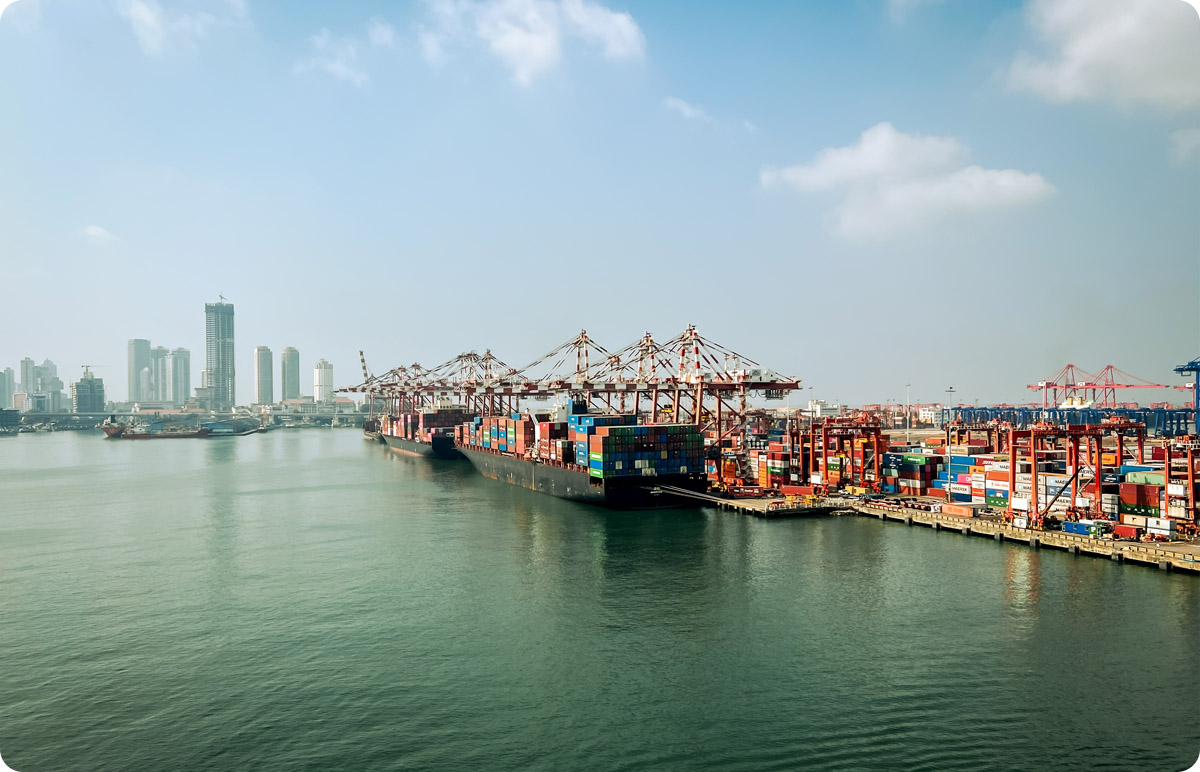October 30, 2025
In a globally connected system of logistics, every swing in fortunes leaves winners and losers – it can be smooth sailing or rough seas for pulse traders, depending on the year. To get a balanced perspective, we spoke to industry insiders to cover a mix of the positives and negatives of shipping in 2025.


Colombo port has seen containers held for ‘more than a month’ according to Binod Agarwal of SGR
Shipping issues are ever-present in the world of pulse imports and exports, and the size of traders’ profits often hinges on the availability of containers, price hikes, and access to crucial routes – all frequently shifted by geopolitical events. We compiled some pulse industry experts to tell us what shipping stories are important to them this year.
"An average delay of 7-10 days is common at the Singapore and Colombo hubs for Indian shipments," says Binod Agarwal of SGR Group. "In many cases, containers are held for over thirty days as shipping lines divert feeder vessels to higher-paying routes. For example, shipments from Australia to Colombo/Ennore take 18-20 days, but then boxes are dumped there for more than a month before reaching Kolkata."
On October 20, S&P Global reported fifteen container ships were waiting at anchor in Colombo Port, quoting global forwarder Kuehne + Nagel, who said: "Terminal operations have been adversely affected due to high yard congestion, increased transhipment volumes, and unfavourable weather conditions."
According to S&P Global, Colombo terminals have been "well above 80% capacity" for some time, leaving little margin for sudden changes in demand.
As for Singapore, recent updates on the congestion situation show that delays can be anything between 1-5 weeks, depending on the specific carrier.
Shipping pulses from Buenos Aires has been impeded by both pushed back shipping dates and container availability, according to Ivan Martin of Alimar: "Delays on shipping dates and lack of container availability are taking up a lot of our attention as of late. There are freight agreements with the shippers that just aren't being fulfilled up to now."
Martin believes the reason for this is in Brazilian port congestion: "Shipping capacity in Argentina is lower due to congestion in Brazilian ports – lots of our shipments are being rolled over to a later date. It's becoming a big problem for exporters in a key export season."
Carla Borges of FNG Trade explains that Brazil has actually seen improvements to the prices on their most important routes: "For a 40-foot container from Brazil to India, usually we would pay between $1500-$1600, but this year, we could get it at $1200 or even less. Perhaps this is due to there being fewer commercial exchanges in the US due to the tariffs – I'm not sure.
"Areas affected by war, like Israel and Jordan, yes, we saw price rises. But on our typical routes to India or Asia, the prices have definitely improved."

Reduced demand for Australian desi crops has freed up space on the the Australia/India route
The Dakhla Atlantic Port Project is found in the city of Dakhla in the Western Sahara, and has set out to build a deep-sea port as a ‘gateway to Africa’. The port is set for completion in 2029.
Mohamed Rai of Terranex believes the port will be a great benefit to commerce with sub-Saharan Africa and other regions: “Dakhla Atlantic port is going to be a crucial port for approaching our region from African countries as well as from Europe and the Americas.”
Rai believes the port is part of a wider strategy to increase Morocco’s position as an important logistics hub: “Morocco is opening its arms to the world,” said Rai. “We are beginning to be a hub, with our many different ports and airports and free-trade zones opening up in each one.”
A large crop of desi chickpeas has brought lower demand and a drop in shipping costs, says Nick Crowley of ETG Australia: “We've seen much less demand for forward sales of this desi chickpea crop compared to last year," explains Crowley, “therefore container availability has been significantly better than what we experienced in 2024."
Prices have also improved, says Crowley: “Freight rates are also approximately 20% cheaper as a result of this decreased demand."